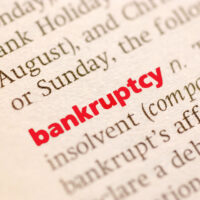What Is a 341 Meeting of Creditors?

Filing for bankruptcy is a significant step toward financial relief, but it comes with important procedural requirements. One of the key steps in the bankruptcy process is the 341 Meeting of Creditors—a mandatory hearing where the debtor meets with the bankruptcy trustee and any creditors who choose to attend. If you are considering bankruptcy in Orange County or the Hudson Valley, understanding the purpose and structure of this meeting can help you feel more prepared and confident as you move forward with your case. Learn about this required step of the bankruptcy process below, and contact the Law Office of Taran M. Provost, PLLC, for personal advice and assistance from a skilled and experienced Goshen bankruptcy attorney.
What Is the 341 Meeting?
The 341 Meeting of Creditors is a hearing required by Section 341 of the U.S. Bankruptcy Code. It typically takes place about 30 to 45 days after you file for bankruptcy. While it is referred to as a “Meeting of Creditors,” creditors are not required to attend, and in many cases, they do not. Instead, the primary purpose of the meeting is for the bankruptcy trustee to review your case and ask you questions about your finances, assets, and debts.
Who Attends the 341 Meeting?
The following parties are usually present at the meeting:
-
The debtor (you) – You must attend the meeting in person or, in some cases, virtually.
-
The bankruptcy trustee – This individual oversees your case and ensures all necessary information is disclosed.
-
Your bankruptcy attorney – If you have legal representation, your attorney will attend to guide you through the process.
-
Creditors (optional) – While creditors have the right to appear and ask questions, they rarely do, especially in Chapter 7 and Chapter 13 bankruptcy cases.
What Happens at the Meeting?
During the meeting, the trustee will verify your identity and ask questions related to your bankruptcy filing. Some common topics include your assets and property, income and expenses, any recent financial transactions (such as large purchases or transfers of property), whether you accurately disclosed all debts and creditors, and any potential issues with your filing. This meeting is not a court hearing, and no judge will be present. However, you are under oath and must answer all questions truthfully.
How to Prepare for Your 341 Meeting
Proper preparation can make the meeting smoother and less stressful. Here’s what you should do:
-
Bring identification – You must present a government-issued ID (such as a driver’s license) and proof of your Social Security number.
-
Review your bankruptcy petition – Be familiar with the documents you filed to ensure accuracy.
-
Be honest and straightforward – Answer the trustee’s questions truthfully and concisely.
-
Consult with your attorney – Your bankruptcy lawyer can help you understand potential questions and ensure you are fully prepared.
What Happens After the 341 Meeting?
For most filers, the 341 Meeting is straightforward and lasts only about 10 to 15 minutes. After the meeting in a Chapter 7 bankruptcy, if no issues arise, the case typically proceeds to a discharge of debts within a few months. In a Chapter 13 bankruptcy, your repayment plan moves forward for court approval. If the trustee requests additional information or documents, you must provide them promptly to avoid delays.
Get Legal Guidance from an Experienced Goshen Bankruptcy Attorney
The 341 Meeting of Creditors is a critical step in the bankruptcy process, but with the right preparation and legal support, it doesn’t have to be intimidating. At the Law Office of Taran M. Provost, PLLC, we help individuals in Orange County and the Hudson Valley navigate the complex bankruptcy process and achieve financial freedom. If you’re considering Chapter 7 or Chapter 13 bankruptcy, contact us today for a consultation, and let us guide you toward a fresh start.